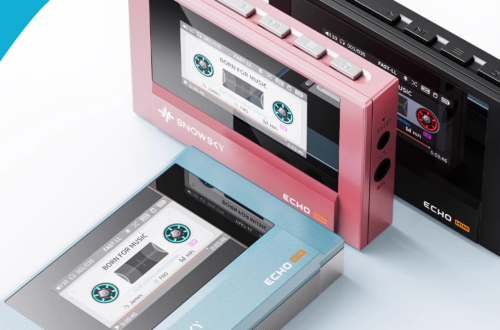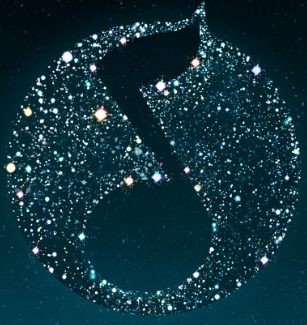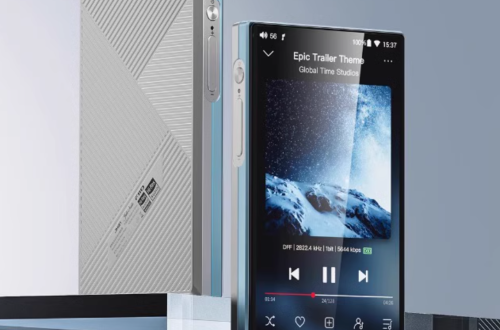HIFI Diary: Amber Sealed in Time – Philips CD10 Portable CD Player Review
I. Preface
This is likely the oldest product reviewed since the BLOG began: Philips CD10 (飞利浦 CD10), a flagship CD player released in 1985. Widely regarded as one of the pinnacles of portable CD players, it embodies the most captivating sound of an era – a time capsule of 1980s audio.
II. Preparation for the Review
- Test Device: Philips CD10
- Test Earphones: TANCHJIM 4U (3.5mm) (天使吉米 4U) (loaner) + Soundnest XY0 (3.5mm) (音巢科技 XY0) (BLOG’s own)
- Source Material: Genuine CDs + CD-Rs burned via Mitsubishi PHONO-R discs
- Power: Third-party adapter (original battery/AC adapter unavailable)
III. Assessment Tracks/Scoring Method
The track selection is based on the blogger’s usual listening preferences, which are about 50% ACG music, 30% modern music, and 20% classical music. Therefore, the selection leans heavily towards Japanese music. The scoring criteria are derived from a simplified version of Liu Hansheng’s “Twenty Essentials for Audio,” with a maximum score of 10, though generally, the highest score given is 9. A score of 8 indicates a clear advantage in the scoring category, 7 signifies excellence, 6 means it can be normally appreciated, 5 means it can be normally listened to, and scores below 5 are not commented on. For a more detailed evaluation plan, please refer to here.
IV. Testing Begins
| Lotoo PAW Gold Touch | JM21 | PHILIPS CD10 | MUB1 | DS1 | DAWN PRO | |
| Integrity | 8.5/10 | 7/10 | 7/10 | 7/10 | 6.5/10 | 6.5/10 |
| High frequency | 8/10 | 6.5/10 | 7/10 | 7/10 | 5.5/10 | 5/10 |
| Medium frequency | 8/10 | 6/10 | 7.5/10 | 6.5/10 | 6/10 | 5.5/10 |
| Low frequency | 7.5/10 | 6.5/10 | 6.5/10 | 6.5/10 | 6.5/10 | 6/10 |
| Analysis, separation | 8/10 | 7/10 | 7/10 | 7/10 | 7/10 | 5.5/10 |
| Sound field, density | 8/10 | 7/10 | 7/10 | 7/10 | 6/10 | 5/10 |
| Drive, dynamic | 8/10 | 7/10 | 7/10 | 7/10 | 7/10 | 5.5/10 |
| Total score | 8/10 | 6.7/10 | 7/10 | 6.9/10 | 6.4/10 | 5.6/10 |
1、歌曲名:たとえ どんなに…(Tatoe Donna ni… / No Matter How Much…),歌手名:西野加奈 (Kana Nishino)

Released in 2011 as the title track of the album with the same name, “たとえ どんなに…” (Tatoe Donna ni…) is a quintessential J-Pop song of the 2010s. The song blends R&B and Pop rhythms and melodies. The slightly melancholic drumbeat and bassline that run through the entire track give it a very strong, recognizable identity. Kana Nishino’s vocal timbre also perfectly fits the modern yet warm atmosphere the song creates. Commercially, the song achieved excellent results after its release, reaching #5 on the Oricon physical sales chart and staying on the chart for an impressive 23 weeks. For a long time, J-Pop has been regarded for its emphasis on melody and sophisticated production. The composition of “たとえ どんなに…” (Tatoe Donna ni…) skillfully combines contemporary popular elements (R&B) with the delicate emotional expression that Japanese artists excel at, showcasing the mature level of the Japanese J-Pop industry at the time. Although this type of “industrial sweetener” inevitably faces criticism for stylistic similarity, rigid creative patterns, and lack of innovation, ultimately, this song, with its smooth melody and Kana Nishino’s near-natural voice shouting the lyrics in the chorus, easily struck a chord with the devotion and deep affection of young girls in love, resonating widely.
たとえどんなにどんなに強く / たとえどんなにどんなにつよく/ No matter how, no matter how strongly I wished
願ったってもう戻れないけど / ねがったってもうもどれないけど / I can’t go back anymore, but
遠い君を見えない君を / とおいきみをみえないきみを / I’ll keep thinking of you,
想い続けて / おもいつづけて / so far away, out of sight.
Speaking of the CD10, its vintage-flavored tuning is immediately apparent upon listening. The CD10’s resolution isn’t particularly high compared to many flagship Chinese DAPs (Digital Audio Players); it’s noticeably lower than the Lotoo PAW Gold Touch (大墨菊), probably similar to the Lotoo PAW Gold (金菊花) from many years ago. However, compared to all current dongle DACs (小尾巴), it’s already a cut above. The separation feels a bit like a weak point. It’s decent for a song like “たとえ どんなに…” (Tatoe Donna ni…), but I feel it might struggle and sound chaotic with more modern, complex electronic music, heavy metal, etc. But as long as you avoid these extreme genres, the CD10, with its warm, gentle, smooth, and richly analog characteristics, covers a fairly broad range of music. It’s also worth mentioning that although the CD10 only has a 3.5mm jack (3.5口), its driving power is quite ample, or rather, the sound gain is enormous. At 30% volume, it fully drove BLOG owner’s very hard-to-drive IEMs. So, just looking at loudness, BLOG owner believes it could even drive something like the SUS (likely Hifiman Susvara headphones) to sufficient levels.
Returning to this song, the CD10’s sound has an inherent “slow” quality. The sound is smooth and natural, making you instinctively relax and listen. The high-frequency extension is good but not harsh, the bass is decent, and the midrange is quite full and flavorful. Unlike the V-shaped tuning of many modern players/dongle DACs, the CD10 has a relatively conservative style in both high and low frequencies, but its midrange is very captivating. Perhaps some old-school audiophiles (老烧) will immediately recognize this as a typical “HUFI” style. But upon closer listening, BLOG owner thinks it’s not quite fair to call the CD10 muddy (糊). After all, while its resolution doesn’t rank high today, it still holds a slight edge over current players in the 3,000 RMB (around $420 USD) price range (simply put, it’s a bit better than many current 43131-chip based players). All in all, Kana Nishino’s voice sounds remarkably solid on the CD10, with stable breath control, an excellent proportion of reverb, and impressive density.
2、Song:空の箱 (Sora no Hako / Empty Box) (井芹仁菜 – Nina Iseri, 河原木桃香 – Momoka Kawaragi),Singer:トゲナシトゲアリ (TOGENASHI TOGEARI)

If BLOG owner doesn’t include an ACG (Anime, Comics, Games) track soon, I’ll almost forget I’m a 2D world (二次元) enthusiast! “空の箱” (Sora no Hako) is a song by the all-girl rock band “TOGENASHI TOGEARI” from the 2024 anime series “Girls Band Cry” (少女乐队的呐喊). As the “soul” (魂) of the entire work, “空の箱” (Sora no Hako) is both an important song that drives the story’s development and a comprehensive expression of the band’s core philosophy. “Girls Band Cry” is a work with a strong “drifting” (漂泊) atmosphere. The five band members each carry significant pressure and discipline from life and society. In plain terms: one failed in a startup and her career was cut short (中道崩殂), one left home at the drop of a hat, one comes from a prestigious family but is precocious and rebellious, one is a tsundere who likes to get in your face and unleash her ultimate move (贴脸开大), and one is an overseas student who faced contempt. These five individuals each have their own problems and their own perseverance. They meet in a huge city and come together because of a song and a shared ideal. As the song that runs through the entire work, what makes “空の箱” (Sora no Hako) special is that it is both an “anthem for losers” (失败者的赞歌) and an “unfinished epic” (未完成的史诗).
“地図にはないはずの三叉路に今 ぶつかっているのですが”
“ちずにはないはずのさんさろにいま ぶつかっているのですが” (Chizu ni wa nai hazu no sansaro ni ima butsukatte iru no desu ga)
“I’m currently at a three-way intersection that shouldn’t be on any map.”
“何を頼りに 進めばいいのでしょうか”
“なにをたよりに すすめばいいのでしょうか” (Nani o tayori ni susumeba ii no deshou ka)
“What should I rely on to move forward?”
This question, posed at the beginning of the song, is also the collective question all “TOGENASHI TOGEARI” members have about life. The unique helplessness and confusion of youth, lingering at life’s crossroads, easily resonates with peers or those who have been through it in contemporary society, setting the tone that this song is written for the “losers in life.” Here, it must be explained why the song is titled “空の箱” (Sora no Hako / Empty Box). In Japan, “box” (箱 – hako) is often used metaphorically as a “container for life.” This can be understood as “a life yet to be filled,” but based on the rebellion against “social rules” in the “Girls Band Cry” story (which is also a manifestation of the rock spirit), it can be further interpreted as “a life unconditioned by society.”
“やけに白いんだ やたら長いんだ”
“やけにしろいんだ やたらながいんだ” (Yake ni shiroi n da Yatara nagai n da)
“It’s blindingly white, unbearably long.”
“コタエはだいたい”
“コタエはだいたい” (Kotae wa daitai)
“The so-called answers are mostly”
“カタチばかりの常識だろう”
“カタチばかりのじょうしきだろう” (Katachi bakari no joushiki darou)
“Just superficial common sense, right?”
Next, we need to talk about the song’s “realism” (真实感). As a Japanese rock band, it still adheres to many basic attributes of rock music, one of which is the spirit of “rebellion” (反抗). The lyrics in the chorus move closer to direct, everyday conversation, reducing decorative and metaphorical content. They use a more straightforward approach, for instance, the lead singer uses a near-“screaming” (嘶吼) vocal style to express her emotions most directly. The song doesn’t “answer” the various questions raised at the beginning. Just as societal oppression undeniably exists and unavoidable “rules” still bind life, the world doesn’t change with “their” cries. “空の箱” (Sora no Hako) isn’t like a self-help article, instilling truths you already know or universally applicable “rules.” After all, how can those who are currently shackled put new fetters on others?
“正解がなんだ 価値なんて無いんだ”
“せいかいがなんだ かちなんてないんだ” (Seikai ga nanda Kachi nante nai n da)
“What is the right answer? There’s no such thing as value.”
“あたしは生涯”
“あたしはしょうがい” (Atashi wa shougai)
“For my entire life,”
“あたし以外じゃ生きられないよ”
“あたしいがいじゃいきられないよ” (Atashi igai ja ikirarenai yo)
“I can’t live as anyone other than ‘me’.”
“これ以上かき乱しても明日はない”
“これいじょうかきみだしてもあすはない” (Kore ijou kakimidashite mo asu wa nai)
“Even if I stir things up more, there’s no tomorrow.”
“どう足掻いても明日はない”
“どうあがいてもあすはない” (Dou agait_e mo asu wa nai)_
“No matter how much I struggle, there’s no tomorrow.”
The second chorus also conveys the song’s ultimate message. Unlike similar scenarios that often encourage a “no matter what, face tomorrow with a smile” happy-ending atmosphere, “空の箱” (Sora no Hako) carries a different kind of decisiveness. The singer denies the meaning of tomorrow and instead affirms the importance of the present (me as me). The song implies a rebellion against “compromise,” a struggle against “rules,” contempt for “authority,” and even a denial of the “self’s” perfection. This strongly “anti-utopian” expression is a reflection of all modern people lingering at “three-way intersections,” and the hidden answer in the song becomes clear – refuse to be defined, write yourself in the blank space. This is what BLOG owner meant at the beginning by calling it an “unfinished epic” for all who wander. I have to say, this is so rock and roll !
Back to the CD10, as mentioned just above, for relatively more complex tracks, the CD10’s lack of separation causes the background sound to be quite muddy, and the drums aren’t clean and crisp enough. Fortunately, the texture, thickness, and separation of the vocals are still excellent. Therefore, if you’re not analyzing the music critically but simply enjoying it, the CD10 still sounds very pleasant and cohesive. But this is also a warning: the CD10 probably can’t handle arrangements more complex than “空の箱” (Sora no Hako), or indeed, most metal music.
V. Summary
Time flies ; 40 years is enough time to turn a babbling baby into a middle-aged person who has come to understand life’s course. BLOG owner doesn’t want to say how many sharp edges are worn down by these 40 years, or how many stories have been compromised. It’s just that when you dig out a pair of headphones from somewhere, put on a CD you’ve listened to countless times, and close your eyes, you still see the self that hasn’t forgotten their original aspirations and is full of passion . Although this PHILIPS CD10 that BLOG owner obtained is quite well-maintained, time has still left its marks on it. Despite this, the overall performance demonstrated by the CD10 still surpasses most current portable players in the $420 USD price range. The musical extension and dynamics left an extremely deep impression on BLOG owner. The CD10’s style is actually quite distinct; it’s not extreme. The music truly feels like a singer crooning gently beside you, enveloping you. High density and relatively excellent dynamics combine to create a slightly warm sound that emphasizes musical fluidity and fidelity. But the CD10 is not without its flaws. The most obvious issues are its slightly outdated resolution and its separation, which clearly lags behind the times. Perhaps in the era when the CD10 was born, there weren’t many tracks that would test it. But with the emergence of various contemporary electronic music, especially CORE genres, the CD10 is indeed




